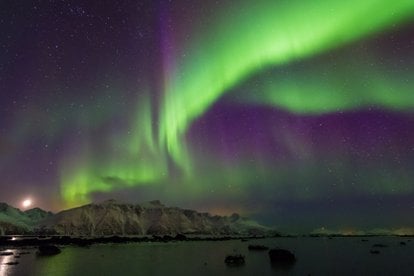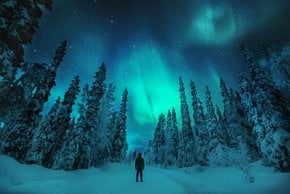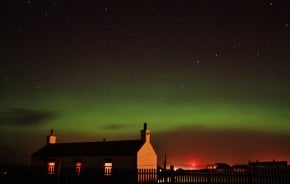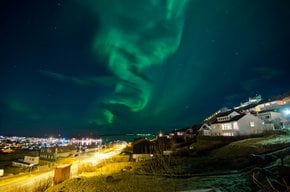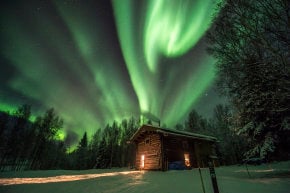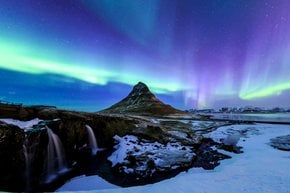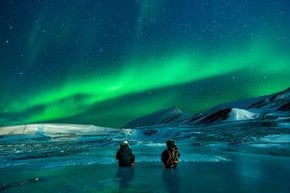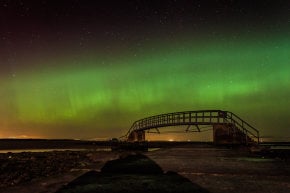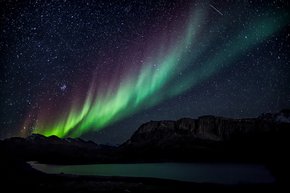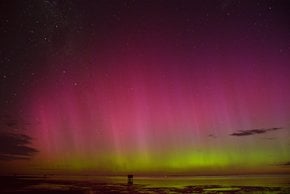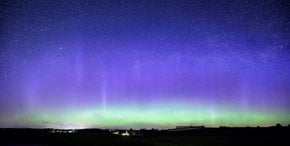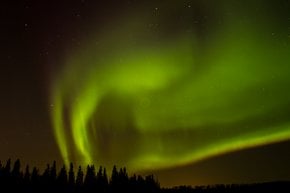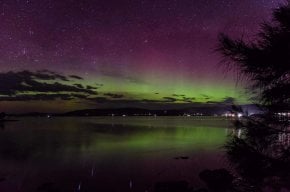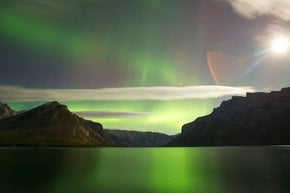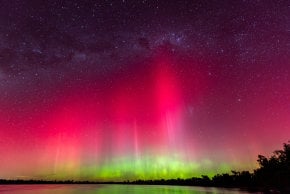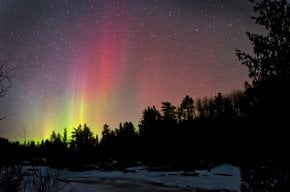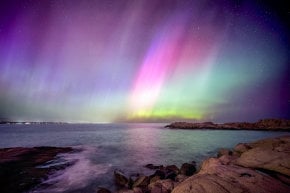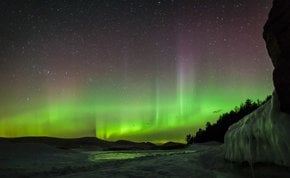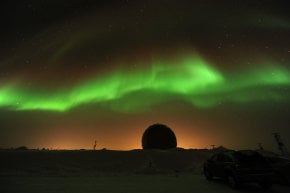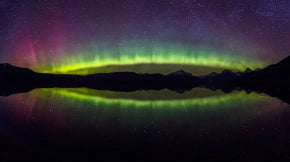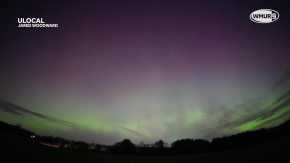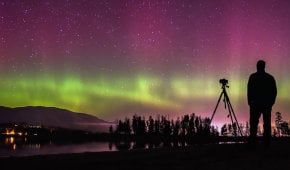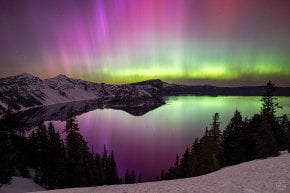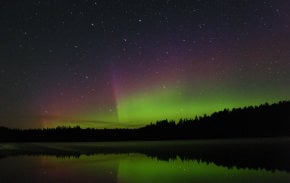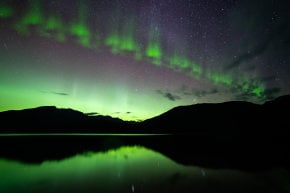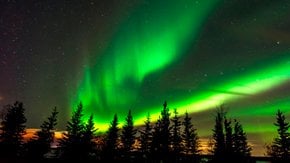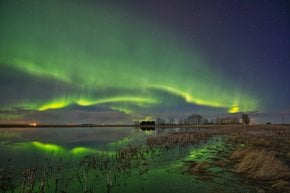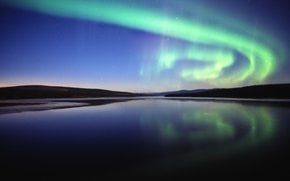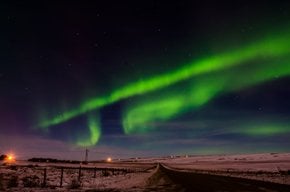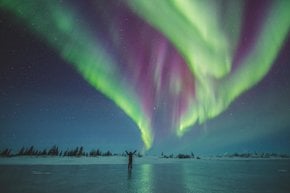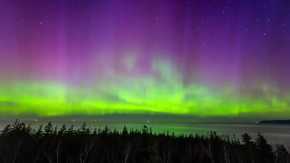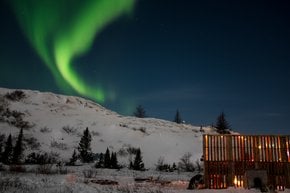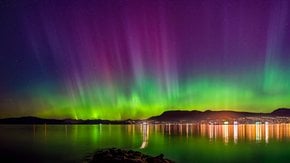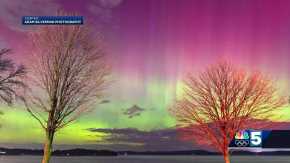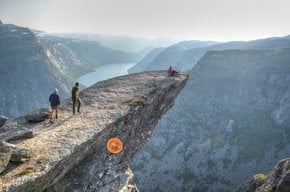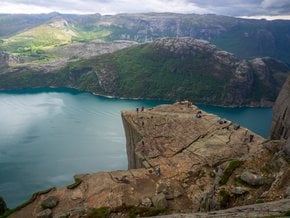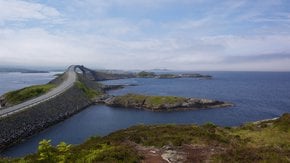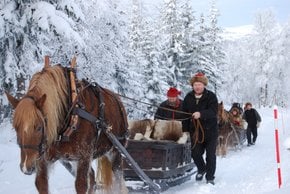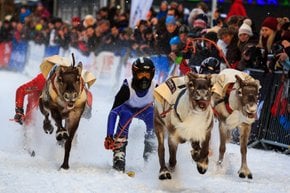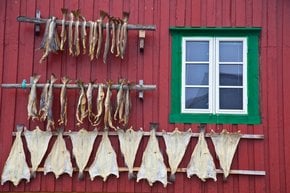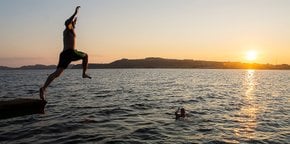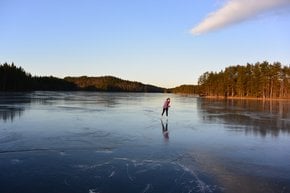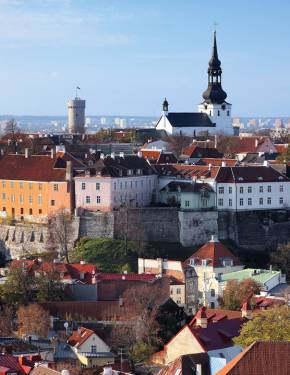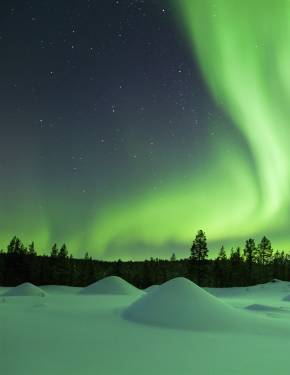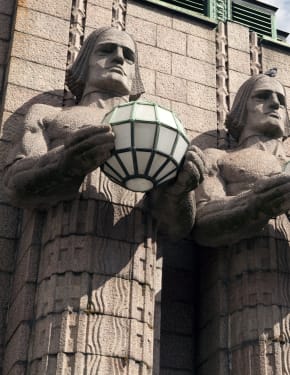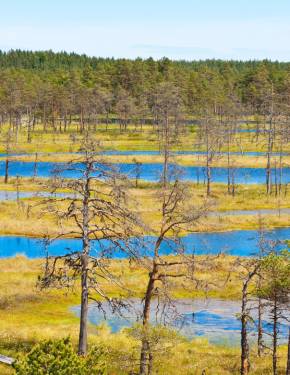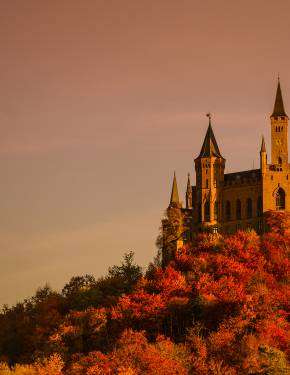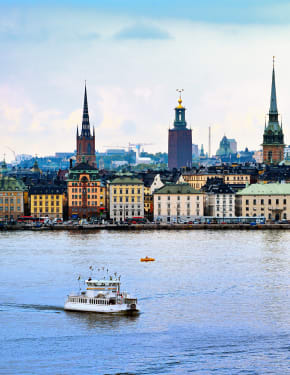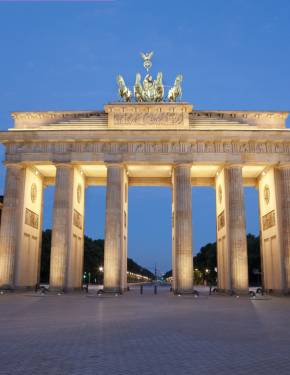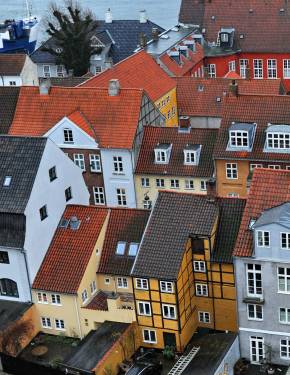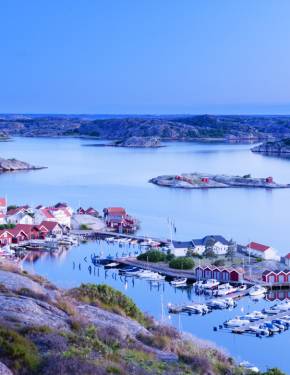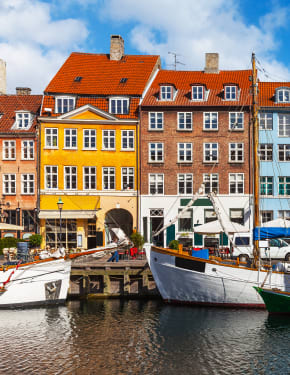Northern or Polar Lights in Norway 2025-2026
Aurora borealis lights up Norvegian skies only in the darkest nights
Best time: late September–late March
The Norwegian Arctic region is considered to be one of the world's best places to see the northern lights. This is a natural phenomenon that is usually caused by so-called solar storms when the sun is the most active, Kp index is used to measure the intensity of the solar particles. You have a good chance to see the phenomenon if it's more than 2 on a scale from 0 to 9. In the summer, sunlight blocks aurora and you can barely see it. The greatest occurrence is observed during winter polar nights along the coasts of Tromsø and Finnmark counties.
Best months to see Northern Lights in Norway
The northern lights season begins in late September and continues through late March. The best time to see this magical spectacle in Norway is March/April and September/October. However, you can also spot auroras in November, December, January, and February. Though winter darkness often allows one to see the lights 24 hours long, the famous aurora borealis appears mostly at night. The early hours of the morning, from 11 pm to 2 am, is the peak time.
Aurora Boreal Forecast
Auroras are difficult to predict because they have stops and starts (known as substorms). In order not to rely only on your patience, it is worth following the aurora forecast in order to successfully plan your hunt for the Northern Lights.
Where to look for Northern Lights
Tromsø
Tromsø, the center of municipality of Troms og Finnmark, is the largest urban area in Northern Norway and the third-largest in the world, located north of the Arctic Circle. There is a good chance to observe northern lights at 60° north, and Tromso is located at 70°, in the middle of the so-called auroral oval, the area with the highest probability of seeing the phenomenon. It also boasts beautiful scenery: islands, fjords, and mountain peaks.
You can go on a northern lights chase with a group of aurora enthusiasts who meet in the center of Tromsø in the evening and then drive to find the lights. Popular spots for aurora-watching include beautiful Skulsfjord, which is less than a 30 min drive north of Tromsø. Get ready to see lots of spectacular reflections in the water. Alternatively, you can head to Ersfjord, in 9 mi (15 km) west of Tromsø, or hike to Brosmetinden peak to capture the lights against beautiful mountains.
If you are ready to travel a bit further, go to North Cape, located on the northern coast of the island of Magerøya. It features a large mountain plateau and spectacular cliffs. You will see northern lights reflected in the Barents Sea and will get to ride in the subsea tunnel connecting Magerøya to the rest of the country.
Lofoten Islands
October, February, and March are considered to be the best month to observe northern lights on Lofoten Islands due to clear skies, dark nights, and suitable weather. The island of Flakstadøya is one of the best locations due to its striking landscapes. Visit Myrland and Skagsanden beaches or other spots along its western coast. Alternatively, there are many suitable spots at nearby Vestvågøya island with its beautiful Uttakleiv, Unstad and Haukland beaches.
Svalbard
Svalbard, situated far north in the Arctic Ocean, is one of the best places on earth to chase northern lights. Darkness, clear skies, cold, crisp air, and intense solar activity—the favorable conditions to see the beautiful phenomenon—are present in the archipelago. These factors are especially intense in Spitzbergen, where aurora appears from mid-September until late March. From November to February, there is no daylight in the capital of Svalbard, Longyearbyen. So you can enjoy aurora all day long, combined with picturesque fjords and glaciers, and maybe even polar bears.
Oslo
It's also possible to see northern lights in the vicinity of Oslo. However, the chances are rather small since the capital lies too far south to be a good aurora borealis viewing spot. Oslo residents get lucky to see the amazing sight just a few times per year, and usually, it's announced in the news, so that as many people as possible can witness the phenomenon. If you are lucky to be in Oslo at the right moment, head to Sognsvann lake to make the most beautiful pictures.
If you are in Oslo and really want to see the Northern Lights, the best option is to hop on a plane to Tromsø or Arctic Circle locations. Try to get at least to Bodø for the proper aurora borealis experience. Located near Rønvikfjellitb mountain, Bodø is a great place to find open sky and beautiful scenery to enjoy the Northern Lights. For higher chances, check the weather forecast to make sure the skies are not clouded.
Other place to see Northern or Polar Lights in Norway
Kirkenes
With 200 nights of aurora borealis each year, Kirkenes is one of the best places to see the bright lights. The dry and clear winter climate also helps, increasing the chances of seeing the northern lights.
Narvik
The Narvik region, located at 68 degrees north latitude within the Aurora Oval, is a great vantage point for viewing the northern lights. The northern lights can be seen here, even on a cloudy night.
How to take pictures of Northern Lights with smartphone
When you have finally chosen the best place for viewing the Northern Lights, you want to leave these moments not only in your memory, but also in your smartphone. However, you should know some tips to make these photos really magical.
Use a tripod to keep your phone camera steady. A good choice would be to use a wide-angle lens. Also, use manual mode and set the lens focus to infinity. The aperture should be low to allow a lot of light to enter the camera. Adjust the ISO from 100 to 800, depending on the darkness of the place you are in, and the shutter speed should be between three and 15 seconds.

